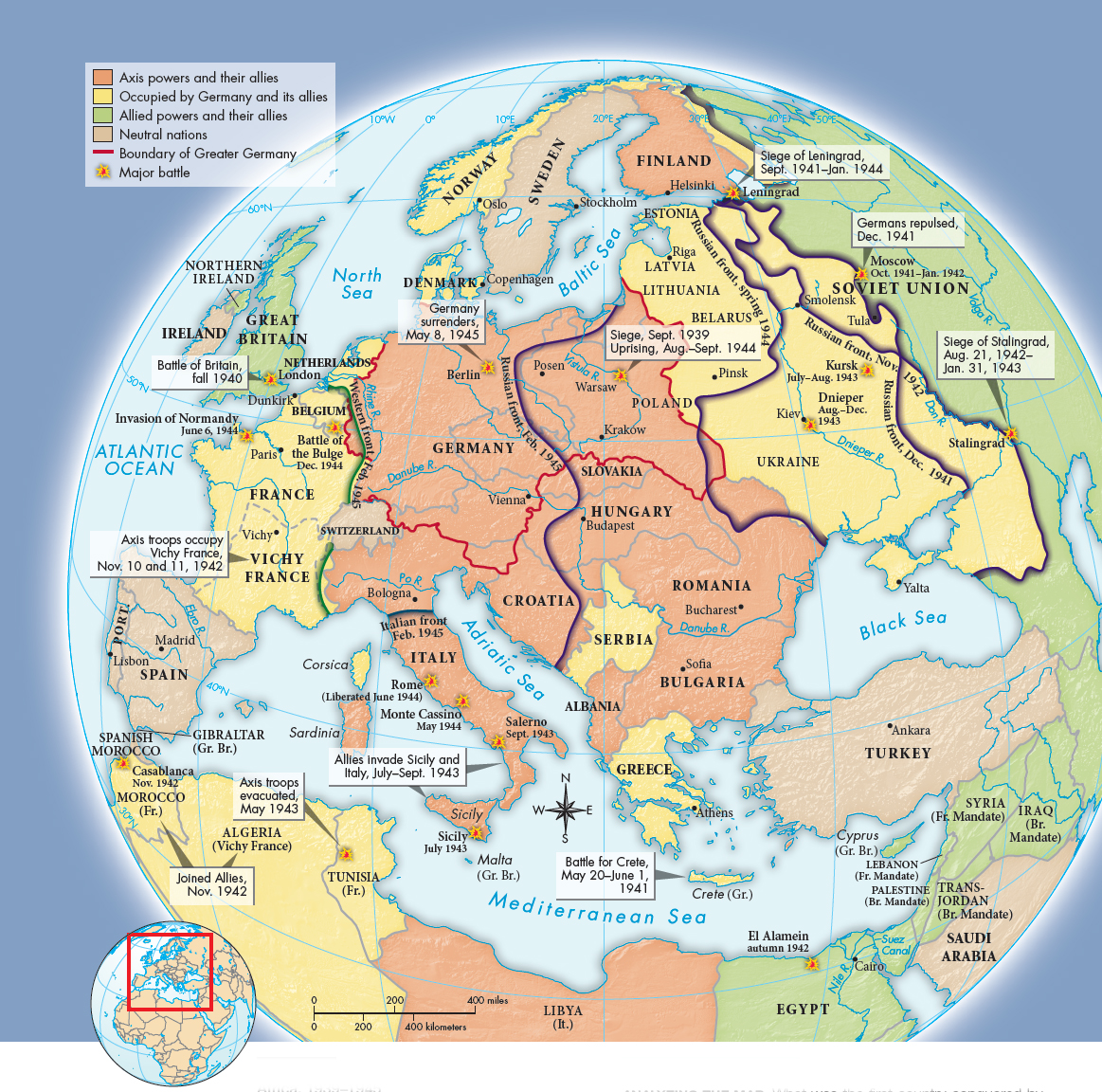Understanding Western Society
Printed Page 863
German Victories in Europe
Using planes, tanks, and trucks in the first example of a blitzkrieg, or “lightning war,” Hitler’s armies crushed Poland in four weeks. While the Soviet Union moved to occupy the eastern half of Poland and the independent Baltic states of Lithuania, Estonia, and Latvia, French and British armies prepared their defenses in the west.
In spring 1940 the Nazi lightning war struck again. After occupying Denmark, Norway, and Holland, the Germans broke into France through southern Belgium, split the Franco-
To prepare for an amphibious invasion of Britain, Germany sought to gain control of the air. In the Battle of Britain, which began in July 1940, up to a thousand German planes a day attacked British airfields and key factories. Losses were heavy on both sides. In September 1940, Hitler angrily turned from military objectives to indiscriminate bombing of British cities in an attempt to break British morale. British aircraft factories increased production, and the British people defiantly dug in. By October, Britain was beating Germany three to one in the air war, and the Battle of Britain was over. Stymied there, the Germans invaded and occupied Greece and the Balkans.
Hitler now allowed his lifetime obsession of creating a vast eastern European empire ruled by the master race to dictate policy. In June 1941, he broke his pact with Stalin and launched German armies into the Soviet Union (Map 27.3). By October, most of Ukraine had been conquered, Leningrad was practically surrounded, and Moscow was besieged. But the Soviets did not collapse, and when a severe winter struck German armies outfitted only in summer uniforms, the invaders were stopped. Nevertheless, Hitler and his allies ruled over a vast European empire. Hitler, the Nazi leadership, and the German army were positioned to greatly accelerate construction of their so-

CONNECTIONS: What implications might the battle lines in February 1945 have had for the postwar settlement in Europe?